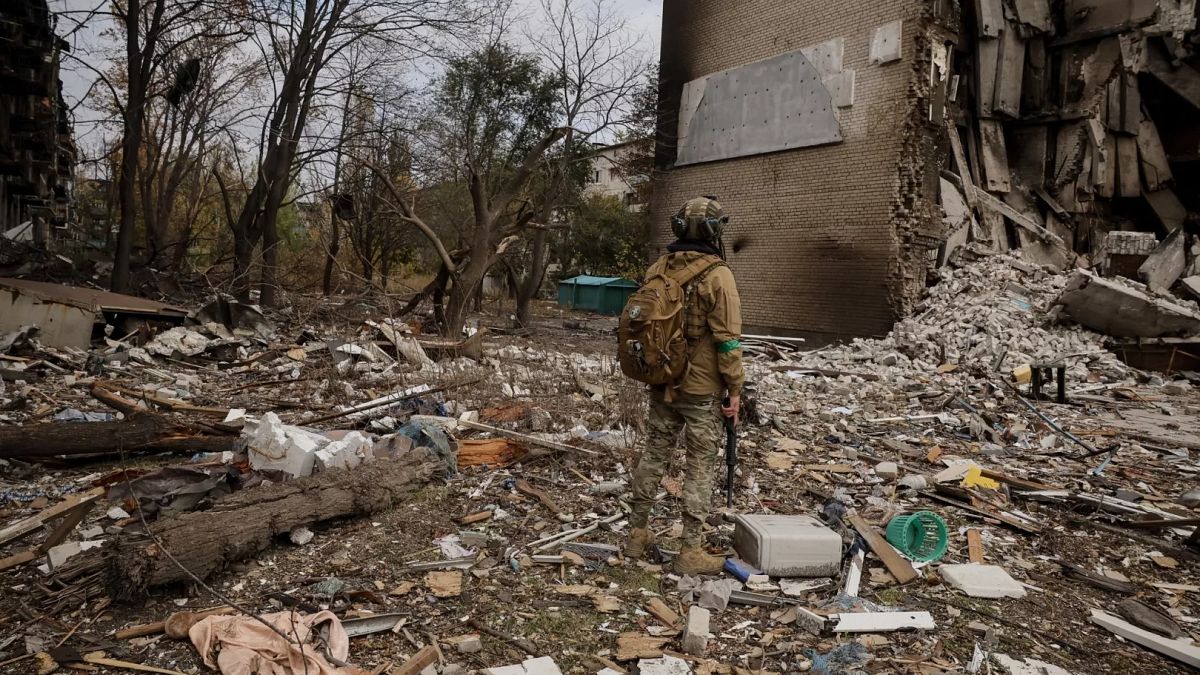NATO defence ministers seek more arms for Ukraine as Western military support fades
ADVERTISEMENT NATO defence ministers will meet later on Wednesday to try to drum up more military support for Ukraine amid a sharp drop in deliveries of weapons and ammunition in recent months to the war-torn country still fighting off Russia’s full-scale invasion. The ministers will also debate a call from NATO’s chief to lift restrictions…

ADVERTISEMENT
NATO defence ministers will meet later on Wednesday to try to drum up more military support for Ukraine amid a sharp drop in deliveries of weapons and ammunition in recent months to the war-torn country still fighting off Russia’s full-scale invasion.
The ministers will also debate a call from NATO’s chief to lift restrictions on the use of their aircraft and other equipment so they can be used to defend the alliance’s eastern border with Russia, Belarus and Ukraine more effectively.
A recent series of mysterious drone incursions and airspace violations by Russian war planes has fuelled concerns that President Vladimir Putin might be testing NATO’s defensive reflexes.
Some leaders have also accused him of waging a hybrid war in Europe but Moscow denies this.
Military support for Ukraine dwindling
Russia’s conventional war on its neighbour is now focused on Ukraine’s power grid ahead of winter.
Moscow’s annual campaign is aimed at disabling Ukraine’s power supply, denying civilians heat and running water as temperatures drop.
At the same time, new data on Western military aid to Ukraine is showing that it plunged by 43% in July and August compared to the first half of the year, according to Germany’s Kiel Institute, which tracks defence and financial support to Kyiv.
The fall occurred even after European allies began buying American weapons for Ukraine under a new financial arrangement known as the Prioritised Ukraine Requirements List (PURL).
The United States does not donate any equipment to Ukraine, either through the scheme or bilaterally but six countries had already contributed $2 billion (€1.72 billion) to the fund, the Ukrainian presidency said at the end of September.
Denmark, the Netherlands, Norway and Sweden have been buying US weapons to send to Ukraine.
But Italy and Spain, among other members of the 32-nation alliance, are sending very little compared to these NATO partners.
“Time and again, some countries are lagging far behind what they should do,” a senior NATO diplomat said ahead of the meeting.
“If Ukraine falls,” he said, “defence expenditure will be much higher than 5%” of gross domestic product, NATO’s current and ambitious spending target.
The diplomat briefed reporters about the concerns on condition that he not be named as they weren’t allowed to speak to the press.
Many countries, Italy among them, are struggling with economic challenges. France believes European money would be better invested in Europe’s defence industry rather than that of the US and it does not intend to take part in PURL.
Euronews sources said that going into Wednesday’s talks, Ukraine aims to encourage countries that have not yet contributed to PURL to do so, pointing out that burden sharing is one of the fundamental issues for NATO.
A second priority for Kyiv, according to Euronews sources, is to try to convince countries that have already announced their intention to contribute to PURL to increase their contributions, adding that Ukrainian officials were aware this was a sensitive subject because every country faces its own domestic problems.
On the battlefield, priorities for Ukraine are support packages to hold the frontline, protect cities and defend the country’s critical infrastructure, the sources said.
Defending NATO’s eastern front
The deployment of air defences to NATO’s eastern flank has not yet deprived Ukraine of military resources. But the alliance’s top officers want countries to lift restrictions on the equipment they sent there to defend NATO airspace against threats from Russia.
“We still have some of these national caveats and they are holding us back. They are making us less effective,” NATO Secretary General Mark Rutte told lawmakers in Slovenia on Monday.
NATO set up an air defence operation dubbed Eastern Sentry last month after several Russian drones entered Polish airspace.
It’s one of three air defence operations along the eastern flank. The second works in the Baltic Sea region, while a third covers Poland’s border with Ukraine.
US Lieutenant General Alex Grynkewich, NATO’s Supreme Allied Commander (SACEUR), believes the response to the airspace incidents in Poland and Estonia was “text book.”
But he wants to be free to use aircraft in any one of those missions elsewhere, providing a unified air shield with common rules of engagement.
Restrictions on when fighter jets are allowed to fire weapons also pose challenges.
“The more national caveats are on, especially our fighter jet assets, the harder it is for SACEUR,” US NATO envoy Matthew Whitaker told reporters ahead of Wednesday’s meeting.
Grynkewich is conducting a review of what he thinks NATO needs to manage the new challenges it is facing, diplomats say.
He’s expected to share his plans with member countries early next year.

